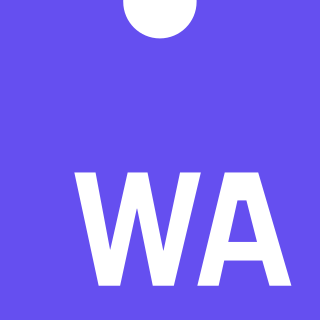
Java is a high-level, class-based, object-oriented programming language that is designed to have as few implementation dependencies as possible. It is a general-purpose programming language intended to let programmers write once, run anywhere (WORA), meaning that compiled Java code can run on all platforms that support Java without the need to recompile. Java applications are typically compiled to bytecode that can run on any Java virtual machine (JVM) regardless of the underlying computer architecture. The syntax of Java is similar to C and C++, but has fewer low-level facilities than either of them. The Java runtime provides dynamic capabilities that are typically not available in traditional compiled languages.

A Java virtual machine (JVM) is a virtual machine that enables a computer to run Java programs as well as programs written in other languages that are also compiled to Java bytecode. The JVM is detailed by a specification that formally describes what is required in a JVM implementation. Having a specification ensures interoperability of Java programs across different implementations so that program authors using the Java Development Kit (JDK) need not worry about idiosyncrasies of the underlying hardware platform.
In software development, obfuscation is the act of creating source or machine code that is difficult for humans or computers to understand. Like obfuscation in natural language, it may use needlessly roundabout expressions to compose statements. Programmers may deliberately obfuscate code to conceal its purpose or its logic or implicit values embedded in it, primarily, in order to prevent tampering, deter reverse engineering, or even to create a puzzle or recreational challenge for someone reading the source code. This can be done manually or by using an automated tool, the latter being the preferred technique in industry.
In computing, source code, or simply code, is any collection of text, with or without comments, written using a human-readable programming language, usually as plain text. The source code of a program is specially designed to facilitate the work of computer programmers, who specify the actions to be performed by a computer mostly by writing source code.

In computer science, an interpreter is a computer program that directly executes instructions written in a programming or scripting language, without requiring them previously to have been compiled into a machine language program. An interpreter generally uses one of the following strategies for program execution:
- Parse the source code and perform its behavior directly;
- Translate source code into some efficient intermediate representation or object code and immediately execute that;
- Explicitly execute stored precompiled bytecode made by a compiler and matched with the interpreter Virtual Machine.
In computing, cross-platform software is computer software that is designed to work in several computing platforms. Some cross-platform software requires a separate build for each platform, but some can be directly run on any platform without special preparation, being written in an interpreted language or compiled to portable bytecode for which the interpreters or run-time packages are common or standard components of all supported platforms.

SpiderMonkey is an open-source JavaScript and WebAssembly engine by the Mozilla Foundation.
In compiler theory, dead-code elimination is a compiler optimization to remove dead code. Removing such code has several benefits: it shrinks program size, an important consideration in some contexts, it reduces resource usage such as the number of bytes to be transferred and it allows the running program to avoid executing irrelevant operations, which reduces its running time. It can also enable further optimizations by simplifying program structure. Dead code includes code that can never be executed, and code that only affects dead variables, that is, irrelevant to the program.
In static program analysis, Soot is a bytecode manipulation and optimization framework consisting of intermediate languages for Java. It has been developed by the Sable Research Group at McGill University. Soot provides four intermediate representations for use through its API for other analysis programs to access and build upon:
In software engineering, profiling is a form of dynamic program analysis that measures, for example, the space (memory) or time complexity of a program, the usage of particular instructions, or the frequency and duration of function calls. Most commonly, profiling information serves to aid program optimization, and more specifically, performance engineering.
Code morphing is an approach used in obfuscating software to protect software applications from reverse engineering, analysis, modifications, and cracking. This technology protects intermediate level code such as compiled from Java and .NET languages rather than binary object code. Code morphing breaks up the protected code into several processor commands or small command snippets and replaces them by others, while maintaining the same end result. Thus the protector obfuscates the code at the intermediate level.

Java is a set of computer software and specifications that provides a software platform for developing application software and deploying it in a cross-platform computing environment. Java is used in a wide variety of computing platforms from embedded devices and mobile phones to enterprise servers and supercomputers. Java applets, which are less common than standalone Java applications, were commonly run in secure, sandboxed environments to provide many features of native applications through being embedded in HTML pages.
In software development, the programming language Java was historically considered slower than the fastest 3rd generation typed languages such as C and C++. In contrast to those languages, Java compiles by default to a Java Virtual Machine (JVM) with operations distinct from those of the actual computer hardware. Early JVM implementations were interpreters; they simulated the virtual operations one-by-one rather than translating them into machine code for direct hardware execution.
Dalvik is a discontinued process virtual machine (VM) in the Android operating system that executes applications written for Android. Dalvik was an integral part of the Android software stack in the Android versions 4.4 "KitKat" and earlier, which were commonly used on mobile devices such as mobile phones and tablet computers, and more in some devices such as smart TVs and wearables. Dalvik is open-source software, originally written by Dan Bornstein, who named it after the fishing village of Dalvík in Eyjafjörður, Iceland.

V8 is a free and open-source JavaScript and WebAssembly engine developed by the Chromium Project for Chromium and Google Chrome web browsers. The project's creator is Lars Bak. The first version of the V8 engine was released at the same time as the first version of Chrome: 2 September 2008. It has also been used on the server side, for example in Couchbase, Deno and Node.js.

An aspect weaver is a metaprogramming utility for aspect-oriented languages designed to take instructions specified by aspects and generate the final implementation code. The weaver integrates aspects into the locations specified by the software as a pre-compilation step. By merging aspects and classes, the weaver generates a woven class.
Java bytecode is the instruction set of the Java virtual machine (JVM), crucial for executing programs written in the Java language and other JVM-compatible languages. Each bytecode operation in the JVM is represented by a single byte, hence the name "bytecode", making it a compact form of instruction. This intermediate form enables Java programs to be platform-independent, as they are compiled not to native machine code but to a universally executable format across different JVM implementations.
Android Runtime (ART) is an application runtime environment used by the Android operating system. Replacing Dalvik, the process virtual machine originally used by Android, ART performs the translation of the application's bytecode into native instructions that are later executed by the device's runtime environment.

WebAssembly defines a portable binary-code format and a corresponding text format for executable programs as well as software interfaces for facilitating interactions between such programs and their host environment.
DashO is a code obfuscator, compactor, optimizer, watermarker, and encryptor for Java, Kotlin and Android applications. It aims to achieve little or no performance loss even as the code complexity increases.








